The Endocannabinoid System Discovery: How Scientists Found Our Body's CBD Receptors
The Revolutionary Discovery That Changed Medicine Forever
The endocannabinoid system discovery stands as one of the most groundbreaking findings in modern medical science, fundamentally changing our understanding of how the human body maintains health and balance. This remarkable biological network of receptors, enzymes, and signaling molecules exists within every person on Earth, creating a sophisticated communication system that interacts seamlessly with cannabinoids like CBD.
For decades, scientists puzzled over why cannabis seemed to have such profound effects on human physiology. The answer lay hidden within our own bodies – a complex regulatory system that had evolved over millions of years to help maintain optimal health. The CBD receptors discovery not only explained how cannabis compounds produce their therapeutic effects but also revealed why our bodies appear to be naturally designed to benefit from these plant-derived molecules.
This discovery represents more than just academic curiosity; it provides the scientific foundation for understanding why humans have used cannabis medicinally for thousands of years. The endocannabinoid system (ECS) serves as the biological bridge between ancient wisdom and modern science, explaining phenomena that traditional healers observed long before we had the tools to understand the mechanisms at work.
Today, as we witness the rapid expansion of CBD and cannabis research, the importance of understanding the ECS becomes increasingly clear. This system doesn't just explain how CBD works – it reveals fundamental truths about human biology, health maintenance, and the intricate ways our bodies strive to maintain balance in an ever-changing world.
The Search Begins: Setting the Stage for Discovery (1960s-1980s)
The journey toward cannabis receptors history began in the 1960s with the isolation of individual cannabis compounds. Israeli scientist Dr. Raphael Mechoulam first isolated and synthesized THC in 1964, followed by CBD isolation in 1963. These breakthroughs provided researchers with pure compounds to study, but they also raised a fundamental question that would drive decades of research: How do these molecules actually work in the human body?
The 1960s and 1970s marked an era of intense curiosity about cannabis pharmacology. Researchers observed that THC produced predictable effects – euphoria, altered perception, increased appetite, and pain relief – but the mechanisms remained mysterious. Traditional pharmacology suggested that drugs work by binding to specific receptors in the body, much like keys fitting into locks. If THC had such consistent effects, logic dictated that specific receptors must exist to receive these molecular signals.
Early research faced significant challenges. Cannabis remained highly regulated, making research difficult and expensive. Scientists had to navigate complex legal frameworks while pursuing their investigations, often working with limited quantities of pure compounds. Despite these obstacles, the scientific community recognized the importance of understanding how cannabis worked, particularly as evidence of its therapeutic potential continued to accumulate.
Throughout the 1980s, researchers began developing more sophisticated tools for studying drug-receptor interactions. Radioactive labeling techniques allowed scientists to track where compounds went in the body and what they bound to. These technological advances set the stage for the breakthrough discoveries that would follow, as researchers finally had the tools necessary to unlock the secrets of cannabis pharmacology.
The scientific community was on the verge of a revelation that would transform our understanding of human biology. Little did they know that their search for cannabis receptors would lead to the discovery of an entirely new physiological system that regulates virtually every aspect of human health and well-being.
1988: The Breakthrough - Discovery of the First Cannabis Receptor
The year 1988 marked a watershed moment in cannabinoid receptor research when Dr. Allyn Howlett and her research team at St. Louis University achieved what many considered impossible – they found the first cannabis receptor in the human brain. This groundbreaking discovery would forever change our understanding of both cannabis pharmacology and human neurobiology.
Dr. Howlett's team employed an ingenious approach using radioactive THC as a molecular probe. By tagging THC molecules with radioactive markers, they could track exactly where these compounds traveled in brain tissue and what they bound to. The results were remarkable: THC consistently bound to specific receptor sites throughout the brain, proving that dedicated cannabis receptors actually existed.
The research revealed that these receptors, later named CB1 (cannabinoid receptor 1), were not randomly distributed throughout the brain. Instead, they showed distinct patterns of concentration that perfectly explained many of cannabis's well-known effects. High concentrations of CB1 receptors appeared in the hippocampus (associated with memory), the cerebellum (controlling movement and coordination), the basal ganglia (involved in motor control), and various brain regions responsible for pain processing.
This discovery represented more than just finding a receptor – it provided the first scientific explanation for why cannabis affects memory, coordination, and pain perception. The CB1 receptor's distribution pattern created a biological map that corresponded precisely to the subjective effects that cannabis users had reported for centuries.
Perhaps most importantly, the CB1 CB2 receptor discovery revealed why CBD behaves so differently from THC. While THC binds strongly to CB1 receptors, causing psychoactive effects, CBD shows much lower affinity for these receptors, explaining why it doesn't produce intoxication while still offering therapeutic benefits.
The implications extended far beyond cannabis research. The existence of cannabis receptors suggested that the human body had evolved specific mechanisms to respond to cannabinoid compounds. This raised a profound question: Why would humans have receptors for plant compounds unless we also produced similar molecules ourselves?
The CB1 Receptor Revolution: Understanding Cannabis's Effects
The CB1 receptor discovery revolutionized scientific understanding of cannabis pharmacology and opened new avenues for therapeutic research. As researchers delved deeper into CB1 function, they uncovered a sophisticated signaling system that explained not only how cannabis works but also why it produces such diverse effects throughout the body.
CB1 receptors belong to a class of cellular components called G-protein coupled receptors, which act as molecular switches that can turn cellular processes on or off. When activated by cannabinoids like THC, CB1 receptors initiate complex signaling cascades that ultimately influence neurotransmitter release, cellular metabolism, and gene expression.
The receptor's location in memory-processing regions like the hippocampus explained why cannabis affects short-term memory formation. CB1 activation in these areas influences the consolidation of new memories, providing a scientific basis for the well-documented phenomenon of cannabis-induced memory impairment. Similarly, high CB1 concentrations in motor control regions explained why cannabis affects coordination and movement.
Research revealed that CB1 receptors also play crucial roles in pain processing pathways. Their presence in pain-transmitting neural circuits throughout the brain and spinal cord explained why cannabis has been used as an analgesic for thousands of years. When activated, CB1 receptors can reduce the transmission of pain signals, offering relief from both acute and chronic pain conditions.
The discovery also illuminated why CBD behaves so differently from THC despite both being cannabinoids. While THC acts as a direct CB1 receptor activator, CBD exhibits complex interactions that can actually modulate CB1 activity. CBD can act as a negative allosteric modulator, meaning it can reduce THC's psychoactive effects when both compounds are present together.
This understanding laid the groundwork for developing cannabis-based medicines with predictable effects. By understanding how different cannabinoids interact with CB1 receptors, researchers could begin designing therapeutic approaches that maximized benefits while minimizing unwanted side effects.
The CB1 receptor discovery also sparked interest in developing synthetic cannabinoids for medical use. Pharmaceutical companies began creating artificial compounds that could activate CB1 receptors for treating conditions like nausea, appetite loss, and chronic pain. While natural cannabinoids like those found in high-quality hemp products often proved superior, synthetic alternatives provided additional research tools and therapeutic options.
1993: The Discovery of CB2 Receptors
Just five years after the CB1 breakthrough, the ECS discovery history took another dramatic turn when Dr. Sean Munro and his research team discovered a second cannabinoid receptor. This finding, published in 1993, revealed that the endocannabinoid system extended far beyond the brain and nervous system.
The CB2 receptor discovery emerged from investigations into cannabis's anti-inflammatory properties. Researchers had long observed that cannabis could reduce inflammation and modulate immune responses, but CB1 receptors in the brain couldn't explain these peripheral effects. The search for additional cannabinoid receptors led to the identification of CB2, primarily located in immune system cells, spleen, tonsils, and other tissues involved in immune function.
CB2 receptors showed a markedly different distribution pattern compared to CB1. While CB1 receptors concentrated in the nervous system, CB2 receptors appeared predominantly in immune cells including macrophages, B cells, T cells, and natural killer cells. This distribution pattern immediately suggested that CB2 receptors played crucial roles in immune system regulation and inflammatory responses.
The CB2 discovery explained many of cannabis's therapeutic effects that couldn't be attributed to brain-based CB1 activation. Cannabis's ability to reduce inflammation, modulate autoimmune responses, and provide relief from immune-related conditions suddenly made scientific sense. CB2 receptors acted as molecular switches that could dial down excessive immune responses or enhance immune function when needed.
Research revealed that CB2 activation typically produces anti-inflammatory effects without the psychoactive consequences associated with CB1 activation. This finding was particularly significant for CBD research, as CBD shows greater affinity for CB2 receptors compared to CB1, helping explain why CBD provides therapeutic benefits without intoxication.
The CB2 discovery also illuminated why cannabis might be helpful for conditions like arthritis, inflammatory bowel disease, and autoimmune disorders. These conditions often involve overactive immune responses that CB2 activation could potentially modulate, providing a scientific foundation for traditional uses of cannabis as an anti-inflammatory medicine.
Interestingly, researchers later discovered that CB2 receptors aren't exclusively limited to immune tissues. Under certain conditions, particularly during inflammation or injury, CB2 receptors can appear in the brain and nervous system, suggesting dynamic roles in neuroinflammation and neuroprotection.
The CB2 discovery expanded the therapeutic potential of cannabinoid-based medicines considerably. By targeting CB2 receptors specifically, researchers could potentially harness cannabis's anti-inflammatory and immunomodulatory effects without producing psychoactive side effects, opening new possibilities for treating immune-related disorders.
1992: The Body's Natural Cannabis - Discovery of Anandamide
The endocannabinoid system timeline reached another pivotal moment in 1992 when Dr. Raphael Mechoulam's research team made a discovery that would fundamentally change our understanding of human biology. They identified the first endocannabinoid – a cannabis-like molecule produced naturally by the human body.
This groundbreaking molecule was named anandamide, derived from the Sanskrit word "ananda," meaning bliss or joy. The name reflected both the molecule's mood-enhancing properties and the researchers' excitement at finding the body's natural equivalent to THC. Anandamide's discovery proved that humans don't just have receptors for plant-derived cannabinoids – we actually produce our own cannabinoids as part of normal physiological processes.
The discovery of anandamide answered a fundamental question that had puzzled researchers since finding CB1 and CB2 receptors: Why would the human body evolve receptors for plant compounds? The answer was elegantly simple – these weren't really receptors for plant compounds at all. They were receptors for our own naturally-produced signaling molecules, and plant cannabinoids just happened to fit the same molecular locks.
Anandamide research revealed that this endocannabinoid plays crucial roles in regulating mood, memory, appetite, pain perception, and reproductive function. Unlike THC, which can remain in the body for extended periods, anandamide is rapidly broken down by enzymes, ensuring precise control over its signaling effects. This rapid metabolism explains why natural endocannabinoid signaling is so tightly regulated and why external cannabinoids can have more prolonged effects.
The discovery also provided insights into why some people might be more sensitive to cannabinoids than others. Individuals with genetic variations affecting anandamide production or breakdown might have different baseline endocannabinoid activity, potentially explaining individual differences in cannabis responses and susceptibility to certain health conditions.
Research into anandamide revealed that this molecule doesn't just activate CB1 and CB2 receptors. It also interacts with other receptor systems, including vanilloid receptors involved in pain and temperature sensation. This broader activity pattern helped explain why cannabinoids can have such diverse therapeutic effects throughout the body.
The anandamide discovery also provided the first concrete evidence for what would later be termed "clinical endocannabinoid deficiency." If the body relies on endocannabinoids like anandamide for optimal function, then deficiencies in these molecules might contribute to various health problems. This concept would later influence therapeutic approaches using premium CBD products to supplement or support natural endocannabinoid function.
1995: The Second Endocannabinoid - 2-AG Discovery
The endocannabinoid story became even more complex in 1995 with the discovery of 2-arachidonoylglycerol, commonly known as 2-AG. This second endocannabinoid proved to be even more abundant than anandamide and showed different patterns of activity that expanded our understanding of the endocannabinoid system's complexity and importance.
Unlike anandamide, which acts as a partial agonist at cannabinoid receptors, 2-AG functions as a full agonist, meaning it can fully activate both CB1 and CB2 receptors. This stronger activation pattern suggested that 2-AG might serve as the body's primary endocannabinoid signal for more robust physiological responses when stronger cannabinoid effects are needed.
Research revealed that 2-AG concentrations in brain tissue are typically 170 times higher than anandamide levels, making it the most abundant endocannabinoid in the central nervous system. This abundance suggested that 2-AG plays fundamental roles in normal brain function, possibly serving as a continuous regulatory signal that helps maintain neural balance and homeostasis.
The 2-AG discovery also revealed important differences in how endocannabinoids are produced and regulated. While anandamide is synthesized from membrane phospholipids through specific enzymatic pathways, 2-AG production involves different enzymes and can be rapidly triggered by various cellular signals, including calcium influx and activation of certain receptors.
Studies showed that 2-AG plays particularly important roles in retrograde signaling – a unique form of neural communication where signals travel backward from receiving neurons to sending neurons. This retrograde signaling allows the endocannabinoid system to fine-tune neural transmission, essentially providing a feedback mechanism that prevents excessive neural activity and maintains optimal brain function.
The appetite-stimulating effects of cannabis also became clearer with 2-AG research. This endocannabinoid showed strong involvement in appetite regulation and food intake behavior, working through both central nervous system pathways and peripheral tissues to coordinate complex feeding behaviors. Understanding 2-AG's role in appetite control opened new possibilities for treating eating disorders and metabolic conditions.
2-AG research also revealed important connections to pain processing and inflammatory responses. This endocannabinoid can be rapidly produced at sites of injury or inflammation, where it helps modulate pain signals and coordinate healing responses. The discovery helped explain why external cannabinoids like those in therapeutic hemp products might be particularly effective for pain and inflammation management.
The Complete System Emerges: Understanding ECS Components
By the late 1990s, researchers had identified the core components that comprise the complete endocannabinoid system, revealing a sophisticated biological network that rivals other major regulatory systems in complexity and importance. The ECS emerged as a crucial player in maintaining homeostasis – the body's ability to maintain stable internal conditions despite external changes.
The complete system includes several key categories of components working together in precise coordination. Receptors like CB1 and CB2 serve as the system's primary signaling targets, though researchers later discovered additional receptors that respond to cannabinoids, including GPR55, TRPV1, and others. These receptors are distributed throughout virtually every tissue and organ system in the body.
Endocannabinoids like anandamide and 2-AG function as the system's natural signaling molecules, produced on-demand when cellular conditions require cannabinoid system activation. Unlike traditional neurotransmitters that are stored in vesicles ready for release, endocannabinoids are synthesized from membrane lipids precisely when needed, allowing for highly responsive and localized signaling.
Enzymatic systems provide essential regulatory control over endocannabinoid activity. Fatty acid amide hydrolase (FAAH) primarily breaks down anandamide, while monoacylglycerol lipase (MAGL) degrades 2-AG. Additional enzymes like cyclooxygenase-2 (COX-2) can also metabolize endocannabinoids, providing multiple pathways for signal termination and fine-tuned control.
Transport proteins facilitate endocannabinoid movement across cell membranes and within cellular compartments. While the exact mechanisms remain debated, these transport systems ensure that endocannabinoids reach their target receptors efficiently and can be rapidly cleared when signaling is no longer needed.
The system's architecture allows for both local and systemic effects. Endocannabinoids can act as autocrine signals (affecting the cells that produce them), paracrine signals (affecting nearby cells), or endocrine signals (traveling through the bloodstream to affect distant tissues). This versatility enables the ECS to coordinate responses at multiple biological levels simultaneously.
Research revealed that ECS activity is highly context-dependent, meaning the system responds differently based on current physiological conditions. During health and balance, ECS activity remains relatively low and targeted. However, during stress, illness, or injury, the system can rapidly upregulate to help restore homeostasis and promote healing.
The ECS also shows remarkable evolutionary conservation, with similar systems found across many species from simple invertebrates to complex mammals. This conservation suggests that endocannabinoid signaling represents a fundamental biological process that has been maintained across millions of years of evolution because of its critical importance for survival and health maintenance.
ECS Functions Discovery: A System for Everything
As research progressed through the late 1990s and early 2000s, scientists discovered that the endocannabinoid system regulates an astounding array of physiological processes. Rather than controlling just one or two specific functions, the ECS emerged as a master regulatory system involved in virtually every aspect of human biology and health maintenance.
Pain perception represents one of the most extensively studied ECS functions. The system modulates pain processing at multiple levels, from peripheral nerve endings to spinal cord transmission to brain-based pain interpretation. CB1 receptors in pain pathways can reduce the transmission of pain signals, while CB2 receptors in immune cells can address the inflammatory components of pain. This multi-level pain control explains why quality CBD products can be effective for various types of pain conditions.
Immune system regulation represents another crucial ECS function. CB2 receptors throughout immune tissues allow the system to modulate inflammatory responses, coordinate immune cell activity, and maintain appropriate immune vigilance. The ECS helps ensure that immune responses are proportional to threats – strong enough to fight infections and heal injuries, but controlled enough to prevent autoimmune damage.
Sleep regulation involves complex ECS interactions with circadian rhythm systems and sleep-promoting brain regions. Endocannabinoids help regulate sleep-wake cycles, influence sleep quality, and coordinate the various stages of sleep. Research suggests that ECS dysfunction might contribute to sleep disorders, while cannabinoid-based interventions might help restore healthy sleep patterns.
Appetite and metabolism control involve ECS signaling in both the brain and peripheral tissues. The system coordinates hunger signals, influences food preferences, regulates energy storage, and affects metabolic rate. The well-known appetite-stimulating effects of cannabis reflect this natural ECS role in feeding behavior and energy homeostasis.
Memory and learning processes involve intricate ECS modulation of synaptic plasticity – the brain's ability to strengthen or weaken neural connections based on experience. The system helps determine which memories are formed, consolidated, and potentially forgotten, playing crucial roles in both learning new information and recovering from traumatic experiences.
Mood regulation represents another fundamental ECS function, with endocannabinoid signaling involved in emotional processing, stress responses, and mood stability. The system interacts with serotonin, dopamine, and other neurotransmitter systems to help maintain emotional balance and resilience to psychological stress.
Reproductive function involves ECS regulation of hormone production, fertility, pregnancy maintenance, and reproductive behavior. The system influences both male and female reproductive processes, from gamete development to successful reproduction. ECS dysfunction during pregnancy can affect fetal development, highlighting the system's importance for reproductive health.
Motor control and movement coordination involve ECS signaling in brain regions like the basal ganglia and cerebellum. The system helps fine-tune movement, maintain balance, and coordinate complex motor behaviors. This function explains why certain cannabinoids can affect coordination and why ECS-targeted therapies might help movement disorders.
The Entourage Effect: Cannabis Compounds Working Together
The late 1990s brought another revolutionary concept to cannabinoid research when Dr. Shimon Ben-Shabat, working with Dr. Raphael Mechoulam, proposed the "entourage effect" theory. This groundbreaking concept suggested that cannabis compounds work more effectively together than in isolation, fundamentally changing how researchers and clinicians approached cannabis-based therapeutics.
The entourage effect emerged from observations that whole-plant cannabis extracts often produced different therapeutic effects compared to isolated cannabinoids like pure THC or CBD. Patients and researchers noticed that full-spectrum preparations sometimes provided superior symptom relief, better tolerability, or unique therapeutic profiles that couldn't be replicated with single compounds.
Initial research focused on interactions between major cannabinoids like THC and CBD. Scientists discovered that CBD could modulate THC's psychoactive effects, reducing anxiety and paranoia while extending the duration of therapeutic benefits. This interaction explained why cannabis varieties with balanced THC:CBD ratios often provided more comfortable experiences for medical users.
The concept expanded beyond major cannabinoids to include minor cannabinoids like CBG (cannabigerol), CBN (cannabinol), and CBC (cannabichromene). Each of these compounds showed unique receptor binding profiles and biological activities that could potentially enhance or modify the effects of THC and CBD. Research suggested that the cannabis plant's full cannabinoid spectrum had evolved to work synergistically.
Terpenes – the aromatic compounds that give cannabis its distinctive smells – also emerged as important entourage effect contributors. Compounds like myrcene, limonene, and pinene showed biological activities that could influence cannabinoid effects. For example, myrcene appeared to enhance cannabinoid penetration across biological membranes, potentially increasing therapeutic potency.
Flavonoids, another class of cannabis compounds, added further complexity to entourage effect interactions. These compounds, which contribute to plant colors and provide antioxidant properties, showed their own biological activities that could complement cannabinoid effects. Some flavonoids appeared to have anti-inflammatory properties that might enhance cannabis's therapeutic potential.
The entourage effect also helped explain why synthetic cannabinoids often produced different effects compared to plant-derived compounds. Pharmaceutical preparations containing only isolated THC (like dronabinol) sometimes caused more side effects or provided less satisfactory therapeutic outcomes compared to whole-plant preparations with equivalent THC content.
This understanding influenced the development of full-spectrum hemp products that preserve the natural ratios of cannabinoids, terpenes, and other compounds found in the cannabis plant. Many consumers and researchers began favoring these products over isolated compounds, believing that nature had optimized the combinations through millions of years of plant evolution.
The entourage effect concept also raised important questions about cannabis research methodologies. Studies using isolated compounds might not accurately reflect how cannabis works in real-world applications where multiple compounds interact simultaneously. This realization led to increased interest in researching whole-plant extracts and standardized multi-compound preparations.
Clinical Endocannabinoid Deficiency: A New Medical Theory
In 2004, Dr. Ethan Russo proposed a revolutionary medical theory that would reshape thinking about endocannabinoid system dysfunction and therapeutic cannabinoid use. The clinical endocannabinoid deficiency (CED) theory suggested that some medical conditions might result from inadequate endocannabinoid system function, similar to how other deficiency syndromes arise from insufficient vitamins or neurotransmitters.
The CED theory emerged from observations about certain medical conditions that seemed to share common features: they often involved dysregulation of pain processing, mood, sleep, and appetite – all functions heavily influenced by the endocannabinoid system. Conditions like migraine headaches, fibromyalgia, and irritable bowel syndrome showed patterns that suggested underlying ECS dysfunction.
Migraine research provided compelling evidence for the CED concept. Studies found that migraine sufferers often had altered levels of endocannabinoids in their cerebrospinal fluid and blood. Some patients showed decreased anandamide levels during migraine-free periods, suggesting that insufficient endocannabinoid tone might predispose individuals to migraine attacks. This finding aligned with historical reports of cannabis effectiveness for migraine treatment.
Fibromyalgia research revealed similar patterns of potential ECS dysfunction. Patients with this chronic pain condition often showed altered endocannabinoid levels and abnormal responses to cannabinoid system modulation. The condition's characteristic features – widespread pain, sleep disturbances, mood changes, and digestive issues – aligned perfectly with known endocannabinoid system functions.
Irritable bowel syndrome (IBS) provided another example of potential endocannabinoid deficiency. The digestive tract contains extensive endocannabinoid system components, and IBS involves dysregulation of gut motility, pain processing, and immune function – all ECS-regulated processes. Some research suggested that IBS patients might have altered endocannabinoid signaling that contributes to their symptoms.
The CED theory proposed that these conditions might benefit from cannabinoid supplementation to restore normal ECS function. Rather than simply treating symptoms, cannabinoid therapy could potentially address underlying system deficiencies that contribute to disease development and progression. This approach represented a fundamental shift from traditional pharmacology toward system-based medicine.
Research began investigating whether genetic variations might predispose individuals to endocannabinoid deficiency. Polymorphisms in genes encoding cannabinoid receptors, endocannabinoid-synthesizing enzymes, or degrading enzymes could potentially affect system function and disease susceptibility. This genetic component could explain why some people seem more responsive to cannabinoid therapies.
The theory also suggested that lifestyle factors might influence endocannabinoid system function. Diet, exercise, stress levels, and sleep patterns all appeared to affect endocannabinoid production and signaling. This understanding opened possibilities for non-pharmaceutical approaches to supporting ECS function through lifestyle modifications.
Clinical applications of CED theory began influencing medical cannabis recommendations. Rather than using high-dose cannabinoid therapy to overwhelm symptoms, some clinicians began advocating for lower-dose approaches designed to gently support and restore natural ECS function. High-quality hemp products with balanced cannabinoid profiles became increasingly popular for this supportive approach.
Modern ECS Research: Expanding Horizons
The 21st century has brought unprecedented advances in endocannabinoid system research, with new discoveries continuing to expand our understanding of this crucial biological network. Modern research techniques, including advanced imaging technologies, genetic analysis tools, and sophisticated biochemical assays, have revealed previously unknown aspects of ECS function and therapeutic potential.
Current research has identified additional cannabinoid receptors beyond CB1 and CB2. GPR55, sometimes called the "third cannabinoid receptor," responds to various cannabinoids and endocannabinoids, potentially explaining some therapeutic effects that can't be attributed to CB1 or CB2 activation. TRPV1 receptors, originally discovered as vanilloid receptors involved in pain and temperature sensation, also respond to anandamide and other cannabinoids.
Novel endocannabinoids continue to be discovered, revealing the system's greater complexity. Compounds like virodhamine, noladin ether, and N-arachidonoyl dopamine (NADA) have joined anandamide and 2-AG as recognized endocannabinoid family members. Each shows unique receptor binding profiles and biological activities, suggesting specialized roles in different physiological processes.
Neuroplasticity research has revealed crucial ECS roles in brain adaptability and learning. The system influences synaptic pruning, neurogenesis, and neural network formation throughout life. This understanding has implications for treating neurodevelopmental disorders, learning disabilities, and neurodegenerative diseases. ECS modulation might help optimize brain function and promote neural recovery after injury.
Epigenetic research shows that endocannabinoid signaling can influence gene expression patterns, potentially providing long-lasting therapeutic effects that extend beyond immediate symptom relief. Cannabinoids might help reset dysfunctional genetic programs associated with chronic diseases, offering hope for more permanent therapeutic outcomes.
Cancer research has revealed complex relationships between the endocannabinoid system and tumor biology. Some studies suggest that cannabinoids might inhibit tumor growth, reduce cancer cell proliferation, and promote cancer cell death. However, research also indicates that the relationship between cannabinoids and cancer is highly context-dependent, with different effects observed in different cancer types and circumstances.
Aging research shows that endocannabinoid system function typically declines with age, potentially contributing to age-related health problems. Understanding this decline has led to investigations into whether cannabinoid supplementation might help maintain health and function during aging. Some research suggests that appropriate ECS support might promote healthy aging and longevity.
Precision medicine approaches are beginning to incorporate endocannabinoid system assessment and personalized cannabinoid therapy. Genetic testing for ECS-related polymorphisms, endocannabinoid level measurements, and individual receptor expression profiles might eventually guide personalized treatment recommendations, optimizing therapeutic outcomes while minimizing adverse effects.
Drug development programs are creating novel cannabinoid-based medications that target specific aspects of ECS function. Rather than using broad-spectrum plant extracts, pharmaceutical companies are developing selective receptor modulators, enzyme inhibitors, and transport protein modulators designed to achieve precise therapeutic effects with minimal side effects.
Frequently Asked Questions About the Endocannabinoid System
What exactly is the endocannabinoid system? The endocannabinoid system is a biological regulatory network found in all mammals, including humans. It consists of cannabinoid receptors, naturally-produced endocannabinoids, and enzymes that control endocannabinoid production and breakdown. This system helps maintain homeostasis by regulating pain, mood, appetite, sleep, immune function, and many other physiological processes.
Why do we have receptors for cannabis compounds? We don't actually have receptors specifically for cannabis compounds. Instead, we have receptors for our own naturally-produced cannabinoids (endocannabinoids). Cannabis compounds like THC and CBD can interact with these receptors because they have similar molecular structures to our natural endocannabinoids, allowing them to "fit" into the same receptor sites.
What's the difference between CB1 and CB2 receptors? CB1 receptors are primarily found in the brain and nervous system, where they influence memory, mood, motor control, and pain perception. CB2 receptors are mainly located in immune system tissues, where they regulate inflammation and immune responses. This distribution explains why THC (which strongly activates CB1) produces psychoactive effects, while CBD (which preferentially interacts with CB2) provides therapeutic benefits without intoxication.
How do endocannabinoids differ from plant cannabinoids? Endocannabinoids like anandamide and 2-AG are produced naturally by our bodies and are rapidly broken down by enzymes, providing precise, short-term signaling. Plant cannabinoids like THC and CBD from premium cannabis products are more stable and longer-lasting, potentially providing sustained therapeutic effects that can supplement or support natural endocannabinoid function.
Can you have an endocannabinoid deficiency? Research suggests that some people might have clinical endocannabinoid deficiency, where their bodies don't produce adequate levels of natural cannabinoids or their ECS doesn't function optimally. Conditions like migraines, fibromyalgia, and IBS might involve endocannabinoid deficiency, potentially explaining why these conditions sometimes respond well to cannabinoid supplementation.
Does everyone respond to CBD the same way? No, individual responses to CBD can vary significantly based on genetic factors, baseline endocannabinoid system function, overall health status, and other medications or supplements being used. Some people may be more sensitive to cannabinoids, while others might require higher doses to achieve therapeutic effects. This variability highlights the importance of personalized approaches to cannabinoid therapy.
Are there other cannabinoid receptors besides CB1 and CB2? Yes, researchers have identified additional receptors that respond to cannabinoids, including GPR55 (sometimes called CB3), TRPV1 (vanilloid receptors), and others. These discoveries suggest that the endocannabinoid system is even more complex than originally thought, potentially explaining why cannabis and CBD can have such diverse therapeutic effects.
Conclusion: The ECS Discovery That Changed Everything
The discovery of the endocannabinoid system represents one of the most significant advances in medical science of the past century, fundamentally transforming our understanding of human biology and opening new frontiers for therapeutic intervention. From Dr. Allyn Howlett's groundbreaking identification of the first cannabis receptor in 1988 to today's cutting-edge research into personalized cannabinoid medicine, the journey of ECS discovery continues to yield insights that benefit human health and wellbeing.
This remarkable scientific journey explained why humans have used cannabis medicinally for thousands of years – our bodies evolved sophisticated systems specifically designed to interact with cannabinoid compounds. The endocannabinoid system serves as evolution's solution to the complex challenge of maintaining biological balance in an ever-changing environment, providing a master regulatory network that coordinates responses across virtually every organ system.
The ECS discovery transformed CBD from alternative medicine curiosity to legitimate therapeutic option, providing the scientific foundation that explains how cannabinoids produce their wide-ranging health benefits. Understanding CB1 and CB2 receptors

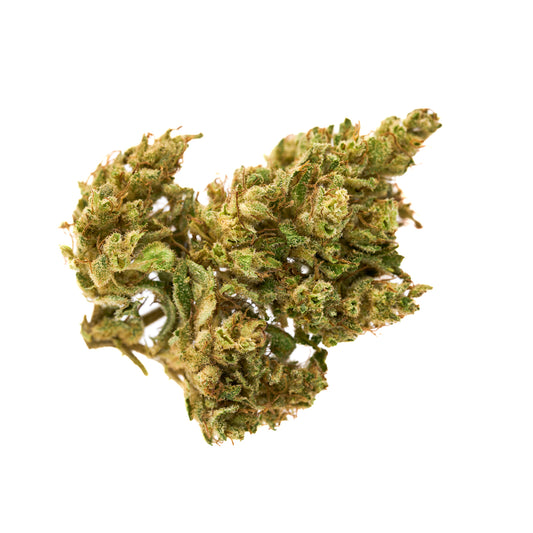
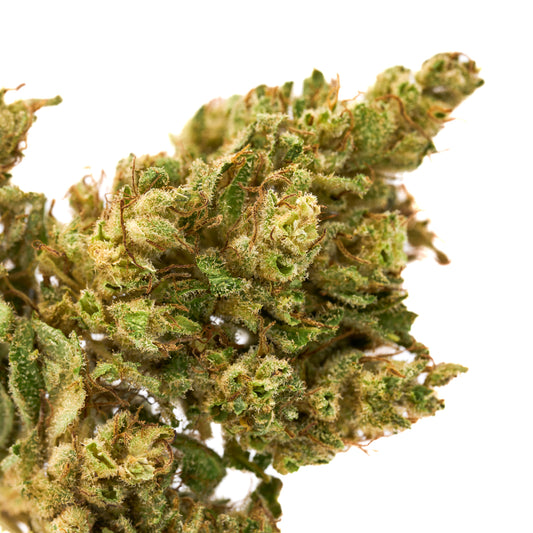

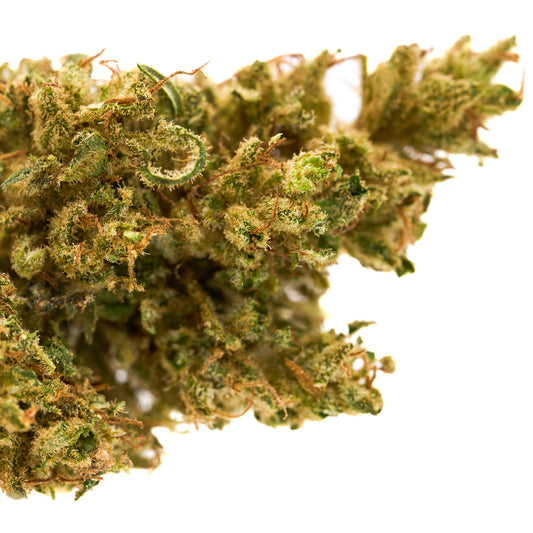

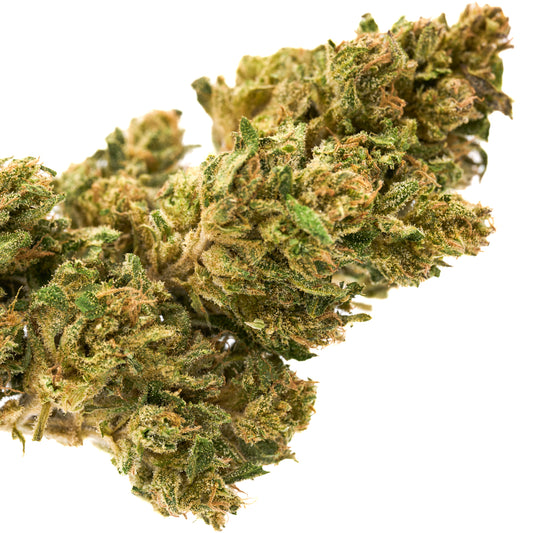





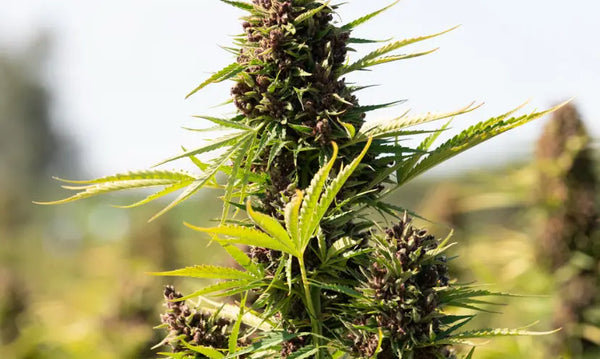


Leave a comment
Please note, comments need to be approved before they are published.